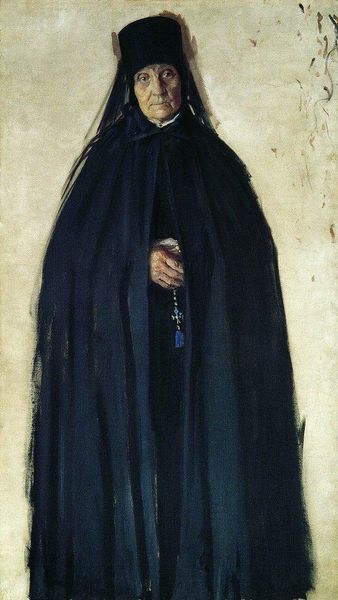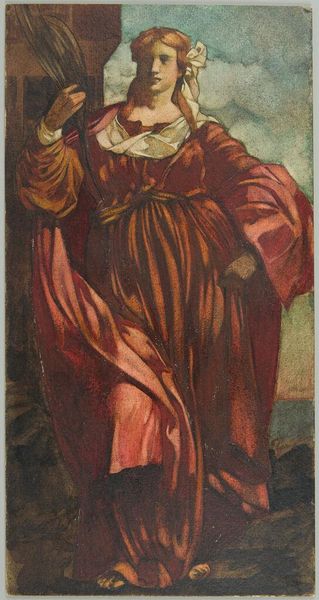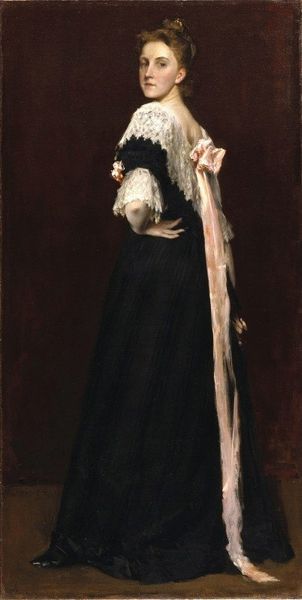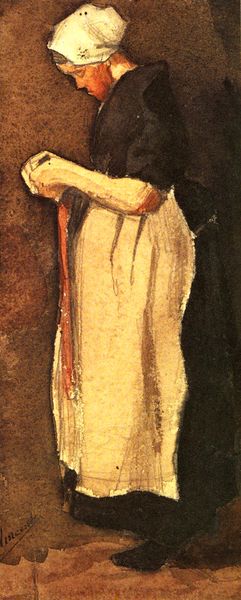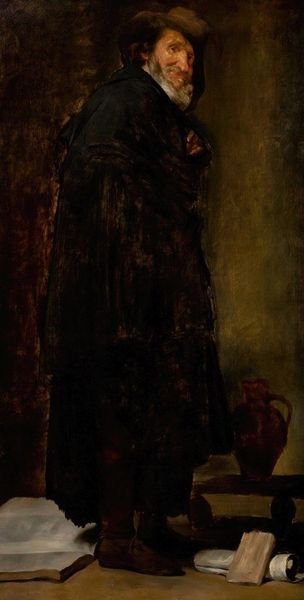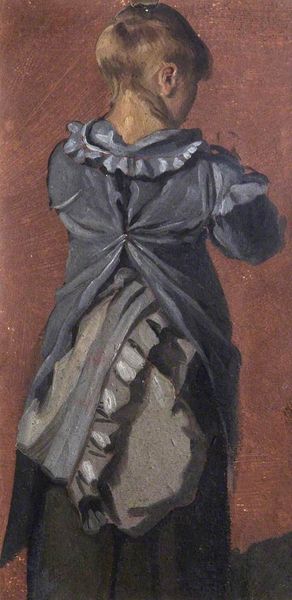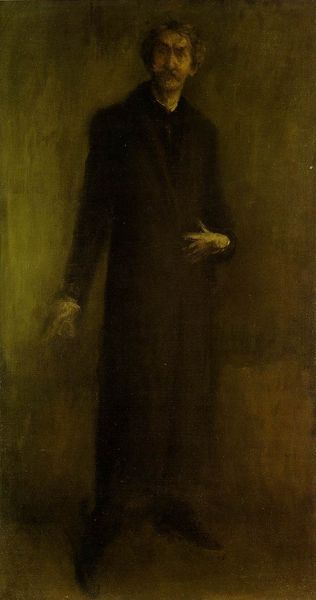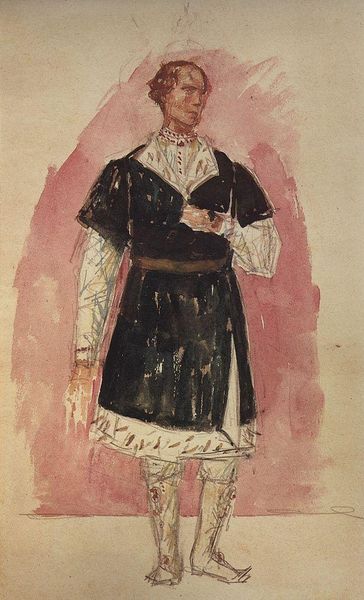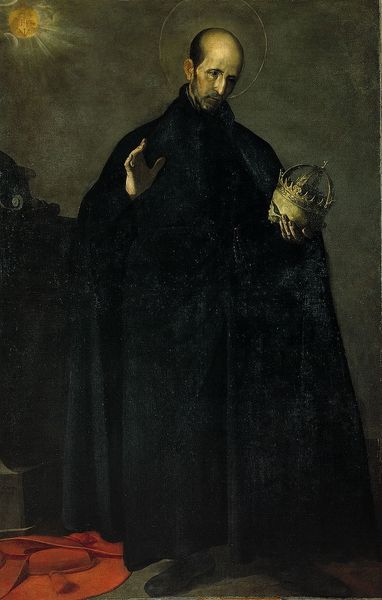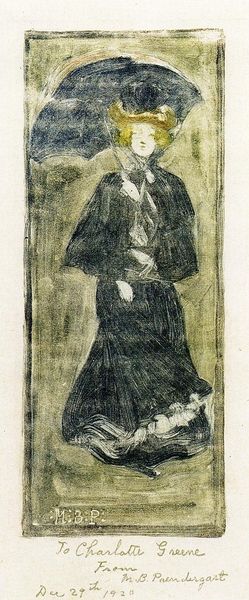
Costume Design by Marina Mnishek to the tragedy of Pushkin's Boris Godunov 1923
0:00
0:00
watercolor
#
portrait
#
watercolor
#
history-painting
#
watercolor
Copyright: Public domain
Curator: Looking at this watercolor from 1923, titled "Costume Design by Marina Mnishek to the tragedy of Pushkin's Boris Godunov", I’m struck by how Petrov-Vodkin captures a figure suspended between power and vulnerability. The stark white ruff against the somber palette…it speaks volumes. Editor: My first impression is one of constrained energy. She’s in motion, with her arm extended in a grand gesture, but the somber tones and muted details keep her earthbound, weighted. It feels like she’s trapped in the role she's meant to perform. Curator: Precisely! The costume, the outward symbol of her status, becomes a cage. It’s fascinating how Petrov-Vodkin uses color and line to suggest the psychological burden of leadership. Look at that crown, almost floating above her head; a signifier divorced from its substance. Editor: It also makes me consider the historical context. Pushkin’s play tackles themes of legitimacy, rebellion, and the human cost of ambition. Mnishek herself was a controversial figure, a Polish noblewoman who became entangled in Russian dynastic struggles. To me, she stands for something much larger than simply herself, embodying the struggle against structures that oppress marginalized people. Curator: It is true that historically Marina became embroiled in what some would describe as dynastic conflicts between Polish and Russian rulers... So, does this artwork tell a history painting without a full cast, or even clear moment of action? Rather than being heroic, Mnishek here feels more like a spectral presence... Editor: Her figure dominates the composition, of course, and this contributes to the sense of isolated power that you note. In staging her so grandly but painting her almost mournfully, the watercolor conveys a warning and invitation to empathy. I feel for the actor required to wear such costumes and adopt this role. Curator: It certainly encourages empathy, by capturing the internal emotional state behind the regalia of her costuming. The historical resonances intertwine, resonating across generations, creating layers of continuity, linking political struggle to human psychology. Editor: Agreed. It is so impactful precisely because it evokes those resonances. Looking at it, I am reminded of the constant tension between identity and performance in history, how even garments have long served as material witnesses of inequity. Curator: A truly thought-provoking design! Editor: It certainly makes a good statement.
Comments
No comments
Be the first to comment and join the conversation on the ultimate creative platform.
